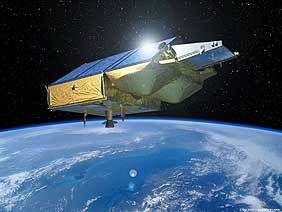-
 DMB
DMB
-
 Cepheid
Cepheid
-
 Texture
Texture
-
 Hydrothermal deposit
Hydrothermal deposit
-
 Alcohol
Alcohol
-
 Marine snow
Marine snow
-
 Bluetongue disease
Bluetongue disease
-
 Dwarf galaxy
Dwarf galaxy
-
 Flat truss
Flat truss
-
 Shooting star
Shooting star
-
 Thalassaemia
Thalassaemia
-
 Anti-androgen
Anti-androgen
-
 Carbohydrate
Carbohydrate
-
 Histology
Histology
-
 M 37
M 37
-
 Systematic
Systematic
-
 Droplet plume
Droplet plume
-
 Eris
Eris
-
 Robotics
Robotics
-
 Earth electrode
Earth electrode
-
 Food bolus
Food bolus
-
 Light-year
Light-year
-
 Permanent meadow
Permanent meadow
-
 Sebkha
Sebkha
-
 Fibrous
Fibrous
-
 Pedipalp
Pedipalp
-
 Procellariiformes
Procellariiformes
-
 Lagrangian
Lagrangian
-
 Lysosome
Lysosome
-
 Black-veined white
Black-veined white
CryoSat
The CryoSat mission was developed as part of the ESA's Earth observation programme to observe the polar regions. It is an altimetric mission wholly devoted to a study of the variations in mass of the polar icecaps and ice floes.
Over a period of 3 years CryoSat will study the height and thickness of the ice. The objective: to better understand the complex interactions between the ocean, the cryosphere and the atmosphere, and in particular heat transfer in ocean movements. These measurements should help to predict the melting of glaciers resulting from climate change.
The first CryoSat was put into orbit by a Russian Rockot launcher on 8 October 2005 from the Plessetsk space centre in Russia, but a fault in the launcher's engine caused it to disintegrate. However, CryoSat-2 was successfully launched on 8 April 2010.

Artist's impression of the CryoSat satellite surveying the ice floes and polar ice caps
Latest
Fill out my online form.



